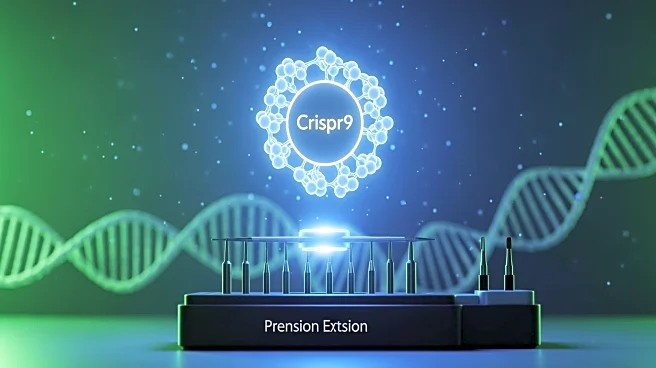What's Happening?
Recent research published in Nucleic Acids Research highlights significant advancements in the engineering of CRISPR-associated transposons (CASTs), which are RNA-guided DNA integration systems. Led by Seong Guk Park, PhD, and Elizabeth Kellogg, PhD, at St.
Jude Children’s Research Hospital, the study demonstrates CASTs' potential to insert any DNA sequence, including entire genes, into specific genomic locations. This capability positions CASTs as a promising foundation for next-generation genome editing and therapeutic technologies. However, the current challenge lies in improving the integration activity of wild-type CASTs in non-native systems, which limits their direct therapeutic application. To address this, the researchers developed a high-throughput dual genetic screen to evaluate the activity and specificity of various CAST variants, achieving up to 95% on-site targeting specificity.
Why It's Important?
The development of CASTs for precise gene insertion holds significant implications for therapeutic applications, particularly in treating genetic diseases. By enabling precise gene replacement, CASTs offer the potential to cure genetic disorders by replacing defective genes with healthy copies. This advancement could revolutionize gene therapy, providing a more targeted and efficient approach to genetic modification. However, the limited activity of CASTs in human cells remains a challenge that researchers aim to overcome. Success in this area could lead to the development of clinically viable, programmable integrases for therapeutic gene insertion, potentially transforming the landscape of genetic medicine and offering new hope for patients with genetic conditions.
What's Next?
The research team plans to translate their findings into mammalian systems, with the primary goal of developing CASTs that are both active and precise in human cells. Advances in computational protein design may streamline CAST's multi-protein machinery, paving the way for commercial-scale therapeutic gene insertion. Continued research and development in this field could lead to breakthroughs in gene therapy, offering new treatment options for a range of genetic diseases. The success of these efforts will depend on overcoming current limitations and achieving high specificity and activity in human cells.













